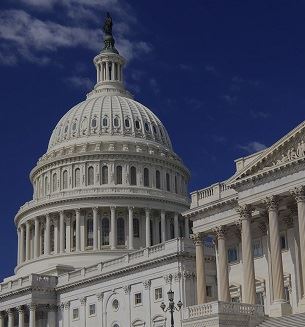Leading Federal Appeal Attorneys: Your Partners in Navigating the Appeals Refine
Leading Federal Appeal Attorneys: Your Partners in Navigating the Appeals Refine
Blog Article
Demystifying the Process of Federal Appeals: What You Required to Know
Browsing the elaborate realm of federal allures can usually look like going across uncharted waters for those not familiar with the procedure. Recognizing the subtleties of appellate court territory, the ins and outs of submitting a notice of allure, providing a compelling brief, and making a persuasive oral argument are essential elements that can considerably affect the outcome of a case. By untangling the layers of complexity bordering federal allures, people can acquire a more clear insight into the mechanisms that regulate this important stage of the legal system.
Recognizing Federal Appeals Refine
Diving right into the elaborate realm of the government allures procedure introduces a structured and systematic trip through the judicial system. Federal appeals function as a vital system for evaluating choices made by reduced courts. Recognizing this procedure is crucial for anybody associated with legal proceedings at the federal degree.
The process usually starts with an event dissatisfied with a reduced court's ruling filing a notice of appeal. This activates a review by a higher court, where a panel of judges examines the lawful disagreements presented by both events. Briefs laying out the legal reasoning behind each party's position are submitted, and dental debates might be heard to clarify intricate concerns.
The appellate court's decision is based on a detailed exam of the reduced court's procedures and the arguments presented. As soon as the appellate court gets to a decision, it can verify, reverse, remand, or modify the reduced court's ruling, providing quality and finality to the lawful disagreement.
Appellate Court Territory Clarified
As we proceed from understanding the federal appeals procedure to dissecting the ins and outs of appellate court territory, an essential element emerges concerning the authority and restrictions of these higher courts in the legal landscape. Appellate court territory describes the extent of cases that a specific appellate court has the power to assess and decide upon. Unlike trial courts that listen to instances for the very first time, appellate courts are restricted to examining decisions made by reduced courts. These decisions can consist of judgments from both state and government courts.
Appellate courts have territory over certain kinds of instances, generally those including lawful errors, step-by-step problems, or concerns of regulation instead of accurate conflicts. The jurisdiction of appellate courts is normally outlined in laws and laws that control the court system. Understanding appellate court territory is crucial for celebrations associated with the charms process as it identifies whether an instance is eligible for testimonial and the extent to which the appellate court can intervene in the reduced court's decision.
Declaring a Notification of Charm
The preliminary action in beginning the federal allures procedure involves filing a Notification of Allure with the ideal appellate court. This vital record officially notifies the court and the other events associated with the instance that the appealing event plans to seek a review of the lower court's decision. Submitting a Notification of Appeal is a stringent procedural requirement that sets the appellate procedure moving.
When preparing the Notification of Appeal, it is vital to ensure conformity with the specific rules and standards of the relevant appellate court. federal appeal lawyers. The paper has to generally include information such as the instance name, the reduced court's name, the date of the judgment being appealed, and a concise declaration showing the premises for the allure

Instruction and Oral Argument
In the appellate procedure, offering written briefs and taking part in oral disagreements play pivotal functions in advocating for the appealing celebration's setting before the appellate court. Briefs are detailed lawful papers that outline the celebrations' arguments, legal authorities, and analysis supporting their settings. These composed submissions give the court with a comprehensive understanding of the realities of the situation, the appropriate regulation, and why the appealing celebration thinks the reduced court's choice should be reversed.
Following the submission and testimonial of the briefs, dental disagreements use the events a possibility to further clarify their positions, deal with any type of questions the appellate judges may have, and emphasize bottom lines from their composed briefs. Dental disagreements are a chance for the attorneys to persuade the courts through verbal advocacy and feedbacks to inquiries from the bench.
Both the written briefs and oral debates are important components of the appellate process, permitting celebrations to present their case completely and compellingly prior to the appellate court. - federal crime attorney
Getting the Appellate Court Decision
The appellate court's decision is typically supplied in a written format and lays out the court's final thoughts on the legal problems provided, the reasoning behind their decision, and the judgment made. The time structure for obtaining the appellate court's choice can vary, however courts aim to supply prompt resolutions. Whether the appellate court affirms, turns around, or remands the reduced court's choice, comprehending the effects of the ruling is vital for all parties involved in the appellate procedure.
Final Thought
Finally, the government appeals procedure is a facility however crucial step in seeking justice. Understanding the appellate court territory, submitting a notification of charm, preparing briefs, and presenting dental arguments are all important parts of this process. Inevitably, receiving the appellate court decision can give quality and resolution to legal conflicts. It is necessary to navigate the government charms process with persistance and interest to information to achieve a reasonable end result.
As we advance from understanding the government allures process to exploring the details of appellate court jurisdiction, a basic aspect comes to light pertaining to the authority and limitations of these higher courts in the legal landscape. Appellate court jurisdiction refers to the scope of instances that a particular appellate court has the power to choose and assess upon. Unlike trial courts that listen to situations for the very first time, appellate courts are limited to assessing decisions made by reduced courts. Understanding appellate court jurisdiction is essential for celebrations entailed in the appeals websites process as it identifies whether a situation is qualified for review and the extent to which the appellate court can intervene in the reduced court's choice.

Report this page